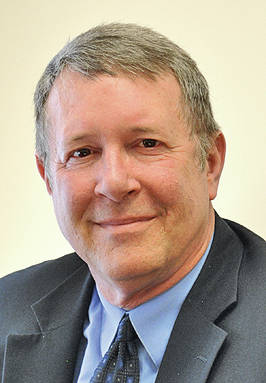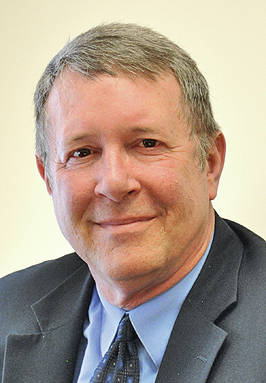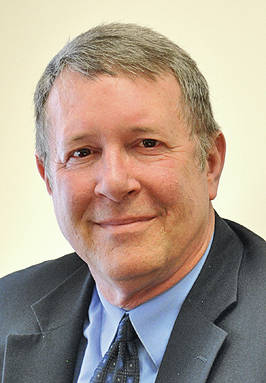


A great example of a forward-looking project that originally brought ridicule but is already proving its worth is the Hobart-Carl Smith Drive road.
The road, which opened about two years ago, provides another complete connection between U.S. 62 at Southern State Community College on its eastern end and SR 73 on its western side. It was originally the subject of much derision as it was being constructed, and even for the first few months after it was open.
For sure, traffic was sparse for a while as motorists became familiar with its existence and slowly changed their habits. Now, the connector is busier, helping alleviate North High Street traffic, and its value is being demonstrated more than ever with the decision to move the 2018 Festival of the Bells to Southern State.
In fact, Kevin Boys, the SSCC president, told me recently that moving the festival to the college would not have been practical without the existence of Hobart-Carl Smith Drive, which will allow traffic to enter and exit the college area from both the east and the west.
The new connecting road was a joint project between the county and the city, but Dean Otworth, the county engineer, was the driving force behind building the road.
Plans for the Hobart-Carl Smith Drive project began in January 2007 when Dean approached the Ohio Department of Transportation with a plan to improve the area’s transportation network by extending the existing Hobart Road from U.S. 62 at the northern corporation limit of Hillsboro to SR 73. (The road is named Hobart Drive on its eastern end, Carl Smith Drive on its western side.)
The Hobart company, SSCC, the city of Hillsboro and First State Bank all donated land for the project. The road also affected 17 property owners, all of whom had to reach agreements for use of their properties.
Thank God that Drew Hastings didn’t own any of the properties, or there would have been an anonymous “No Hobart-Carl Smith Drive” website created, objections at public meetings, and eventually a decision by elected officials not to do it.
The road was completed – roughly a year ahead of schedule — at a cost of about $7 million from a variety of state and regional highway and development funds won by both the county and the city. Just like Harry Sauner Road before it, Hobart-Carl Smith will someday be dotted with retail stores and other destination points. But it had to be built first.
How many vehicles per day do you think travel the road? When it was built, Dean estimated it would be used by about 5,200 vehicles every day. After it was open a month, a traffic count showed that it had exceeded that mark by more than 1,000 per day. There hasn’t been another count since then, but safe to say those numbers have been far eclipsed.
Dean has also taken grief for building sidewalks along the new connector, “sidewalks to nowhere,” the detractors say. But as the new city sidewalks along North High Street leading to Southern State attest, there’s a lot of foot traffic in this town, especially in good weather. A lot of people are currently using the Hobart-Carl Smith sidewalks for exercising or dog walking, but someday those sidewalks will be used by people walking to the new developments that will exist there.
Also the subject of criticism when it was built was the “roundabout” in the middle of the new connector, rather than a traditional four-way stop. Some people said there would be a stream of accidents.
But Dean pointed out that study after study has shown roundabouts to be much safer than intersections with four-way stop signs – reducing fatalities by about 90 percent — and that’s proven to be true in this case, too. Dean said Monday he was aware of a snow and ice-related accident at the roundabout last winter, but that’s about it.
A New York Times article a couple of years ago quoted Richard Retting, a former transportation researcher at the Insurance Institute for Highway Safety, as saying that roundabouts were first built in the United States in the early 1990s, and have doubled in the last decade to around 5,000 today. “There are hundreds if not thousands more in the planning stages,” said Retting. That’s because they’re safer.
Sheriff Donnie Barrera told me Monday he agreed with that assessment, although he warned motorists to be on the lookout for deer on the new roadway, which is the reason for most of the accidents that have happened so far. But he said the new road has been “a very good thing for the city and the county,” adding that it’s been great for deputies at the Highland County Justice Center to get in and out, especially when Hobart and Southern State employees and students are leaving mid-afternoon.
Looking ahead even further, Dean made sure the traffic signal control box on the end of Carl Smith that intersects with SR 73 was equipped with the components necessary to easily convert it from its current flashing signal to a full-fledged stoplight (which already exists on the Hobart-62 side) as soon as the traffic count warrants the change.
Hobart-Carl Smith Drive is “a good investment for the county, and it will continue to prove its value,” Dean said Monday.
But you have to be willing to do something that might be new and strange for a community, usually in the face of constant critics. We still have some forward-thinking public officials here, and even though they have to put up with grumblers and naysayers, they forge ahead. We’re lucky to have them.
Reach Gary Abernathy at 937-393-3456 or on Twitter @abernathygary.


